Once again, the wonderful team of Artesane share the second part of the trousers adjustments with us! Thanks so much!
…………………………………………………………………………………………………………………..
Now that you can alter the legs of a trousers pattern in your sleep, let’s focus on altering a more difficult area : the crotch.
1/ BEFORE STARTING
MATERIAL
Material needed :
- Your trousers pattern (front leg and back leg)
- Pattern paper or Kraft paper (cardboard)
- Pens in different colours
- tape
- scissors
HOW IS MADE THE CROTCH OF A PAIR OF TROUSERS ?
The crotch of a pair of trousers is the curved seam that goes from the waistband center front to the waistband center back. It is made of two parts : the rise (the less curved part) and the curve.
You can alter the rise or the curve, or both at the same time. However, we recommend starting by altering only the rise of the crotch as it’s easier to adjust and most of the time, it’s enough to modify the few issue you might have with the inseam, seat or waist area.
WHICH SOLUTION FOR WHICH PROBLEM ?
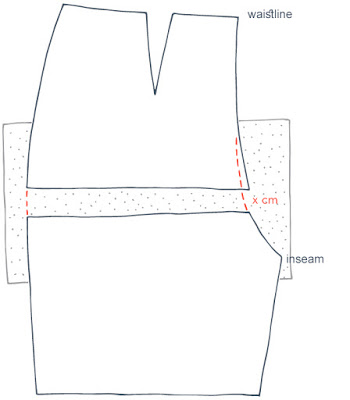
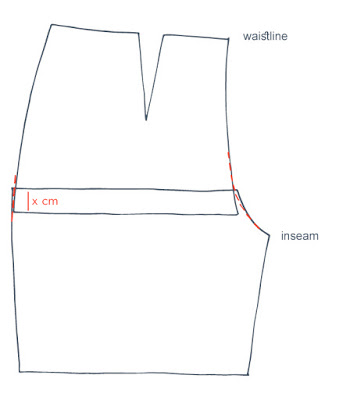
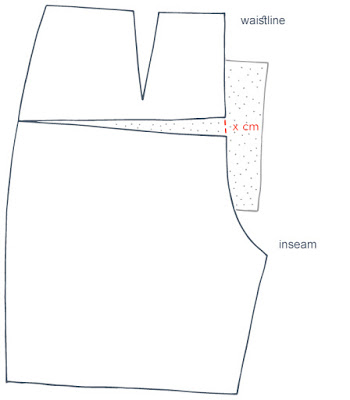
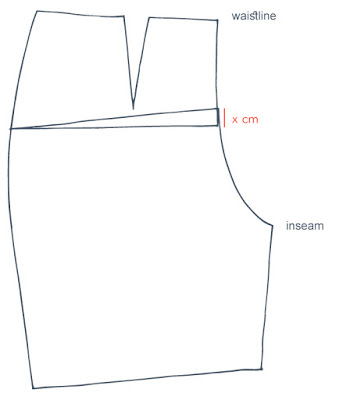
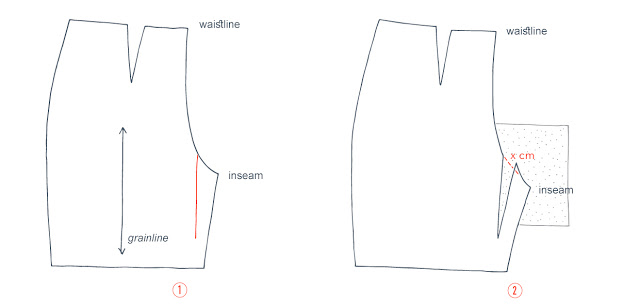
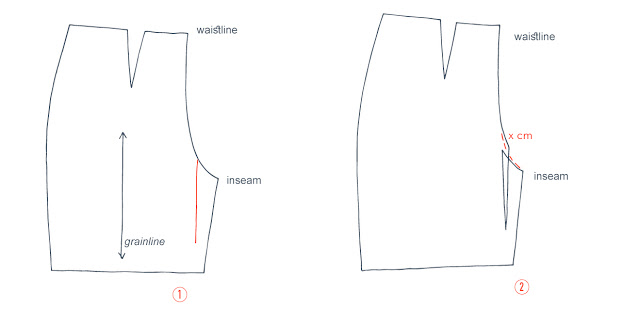
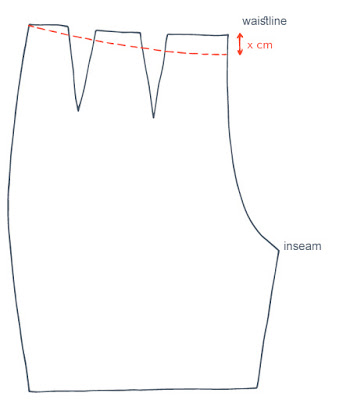


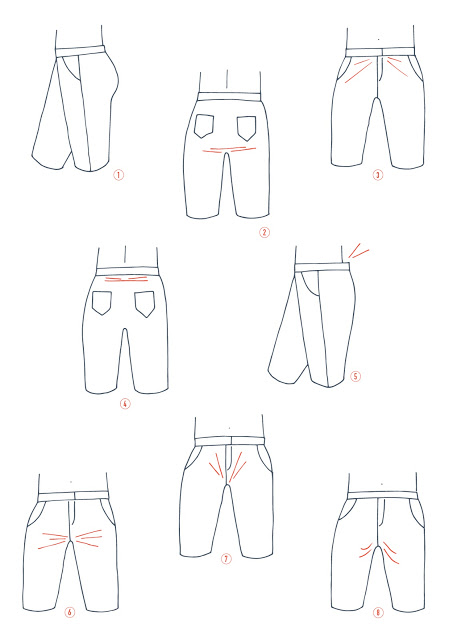
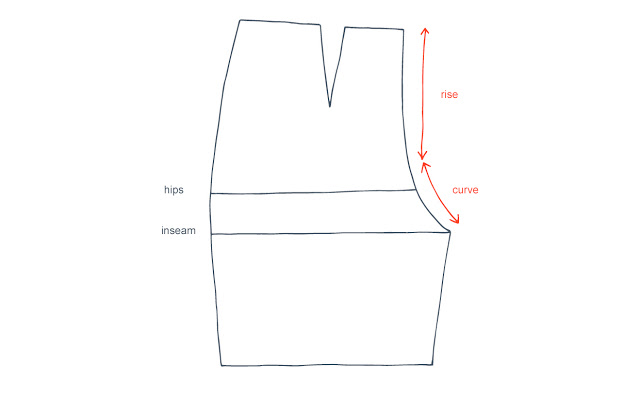
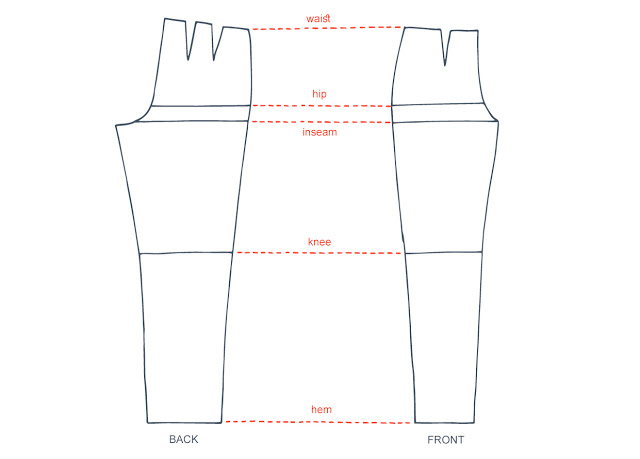
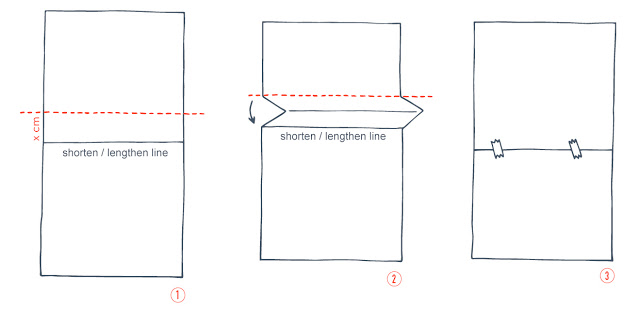
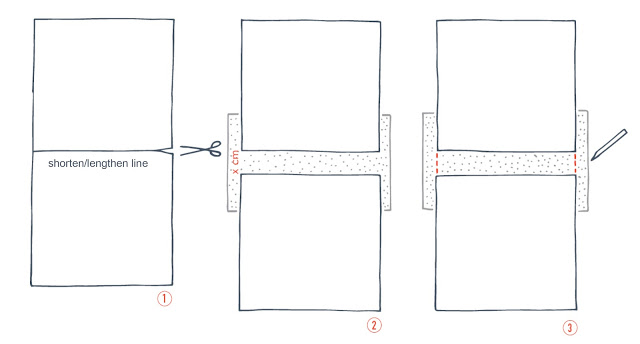
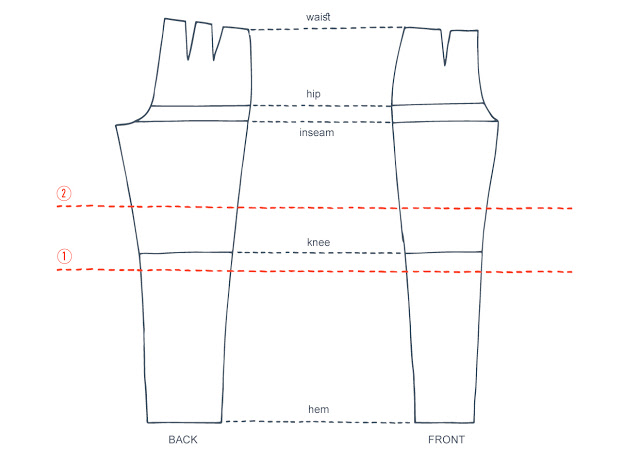
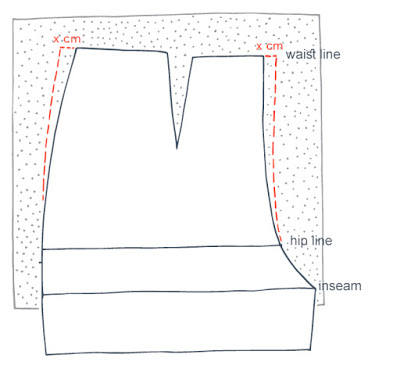
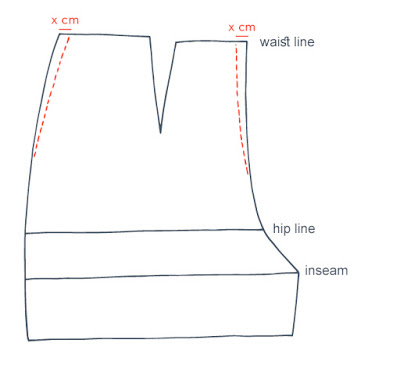
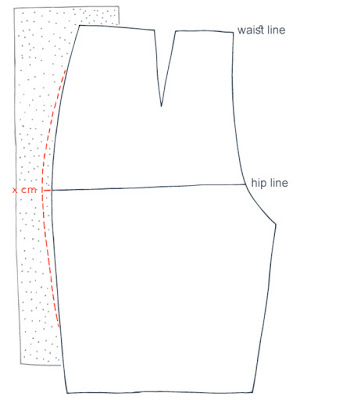
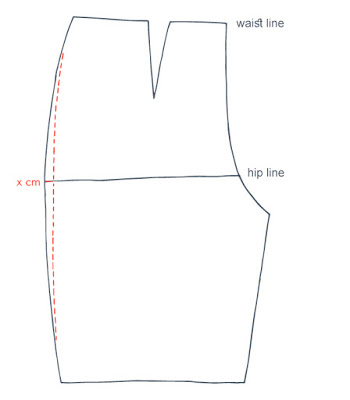
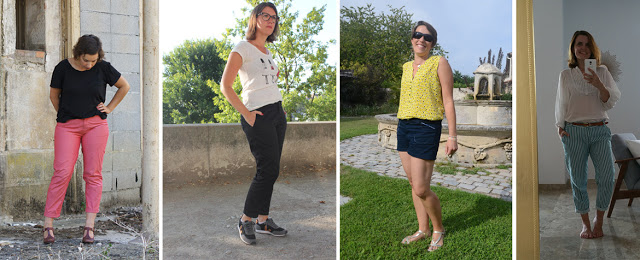
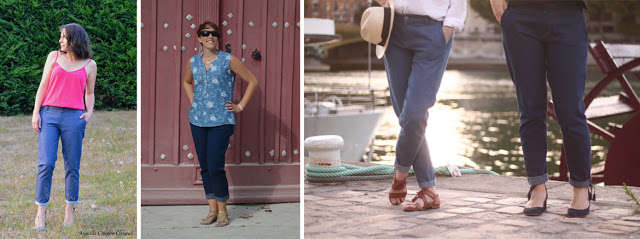
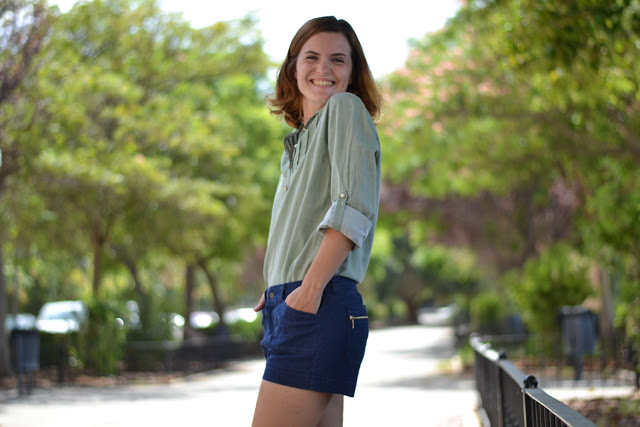
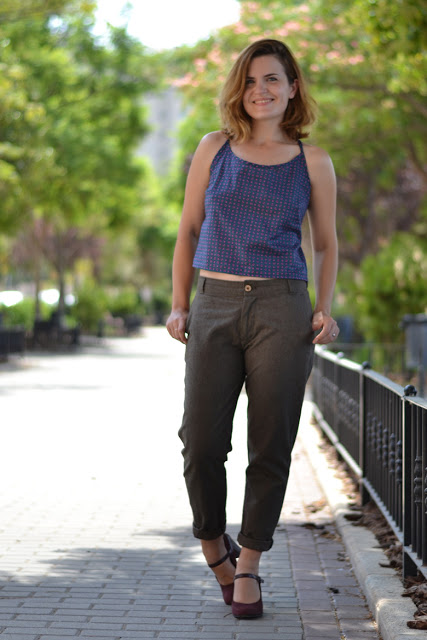
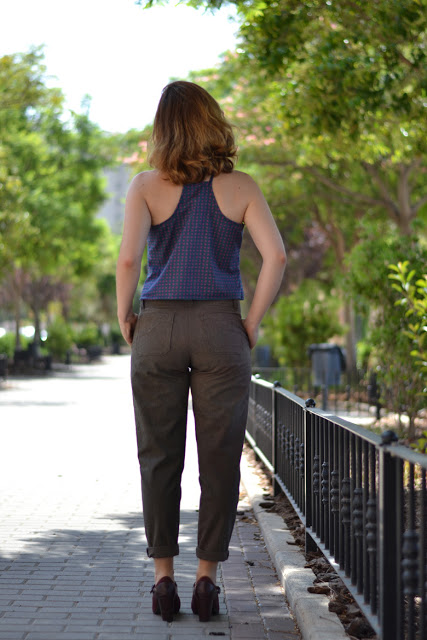
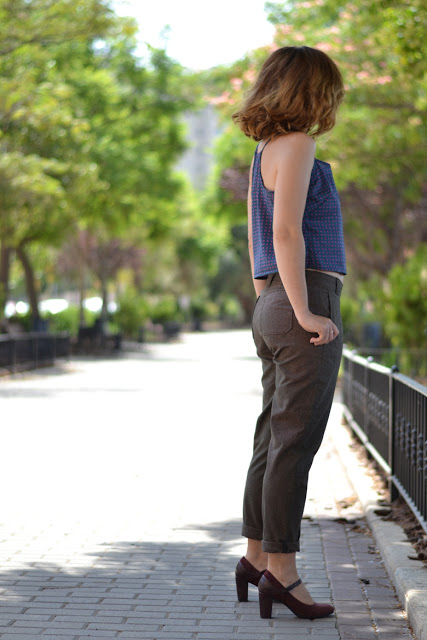
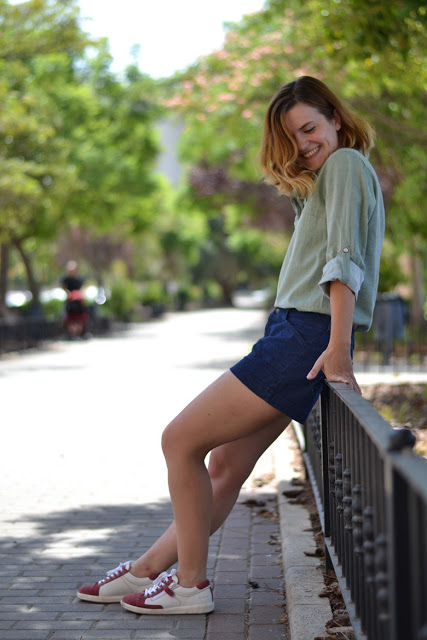
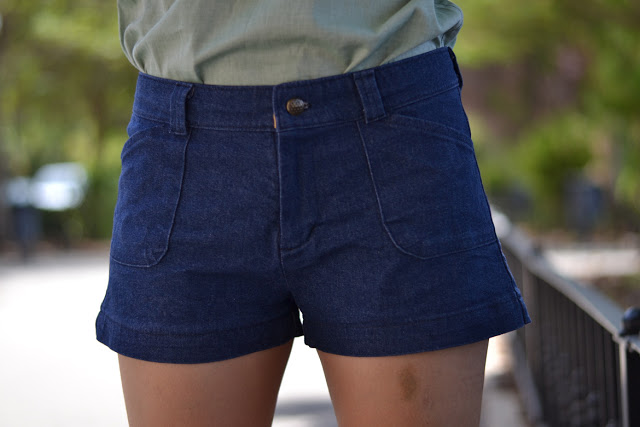
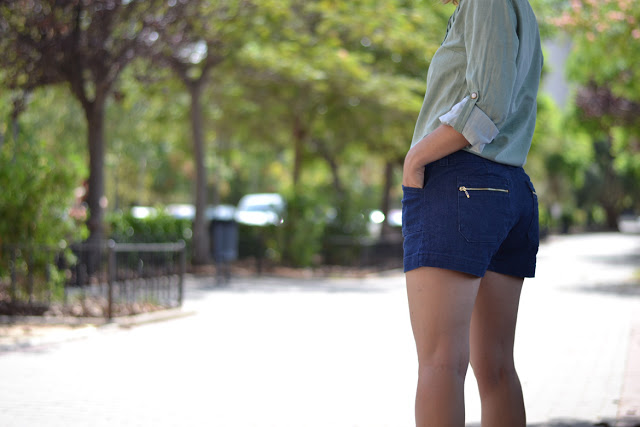
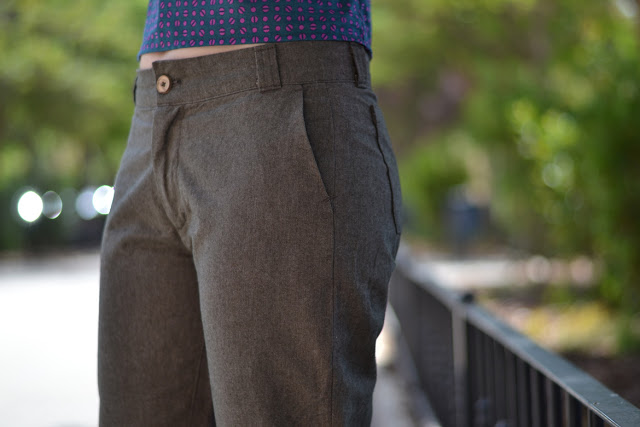
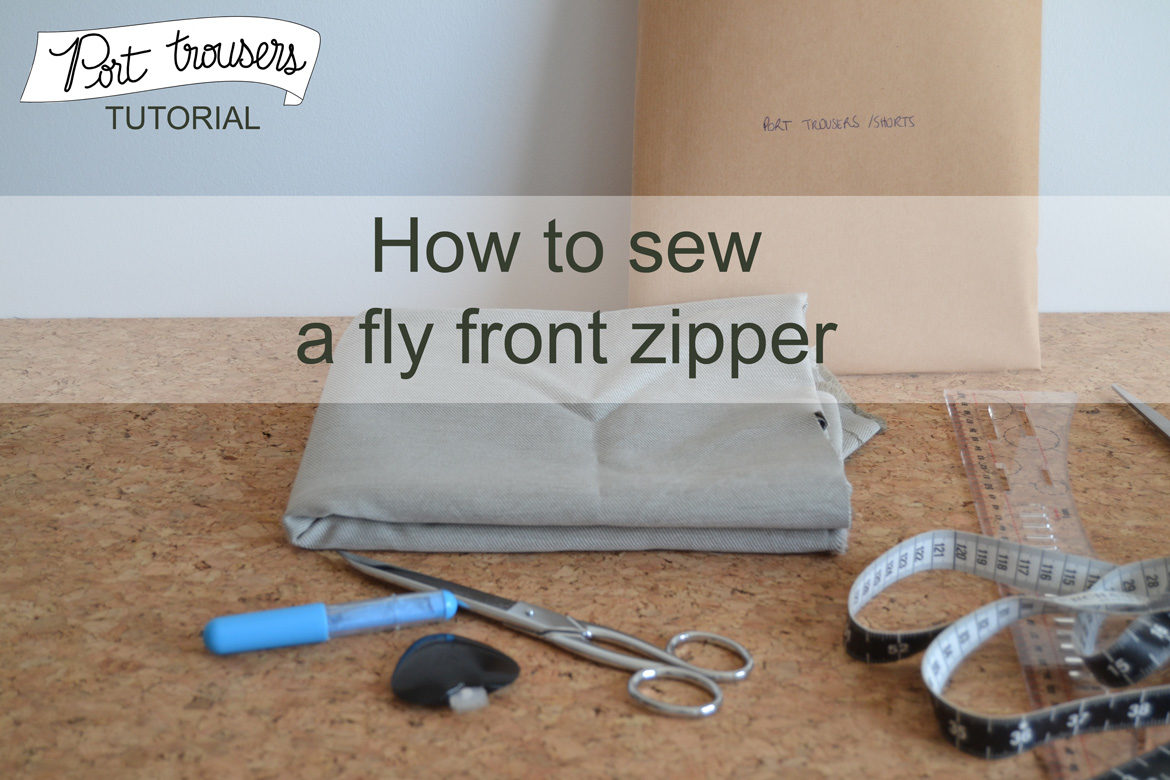
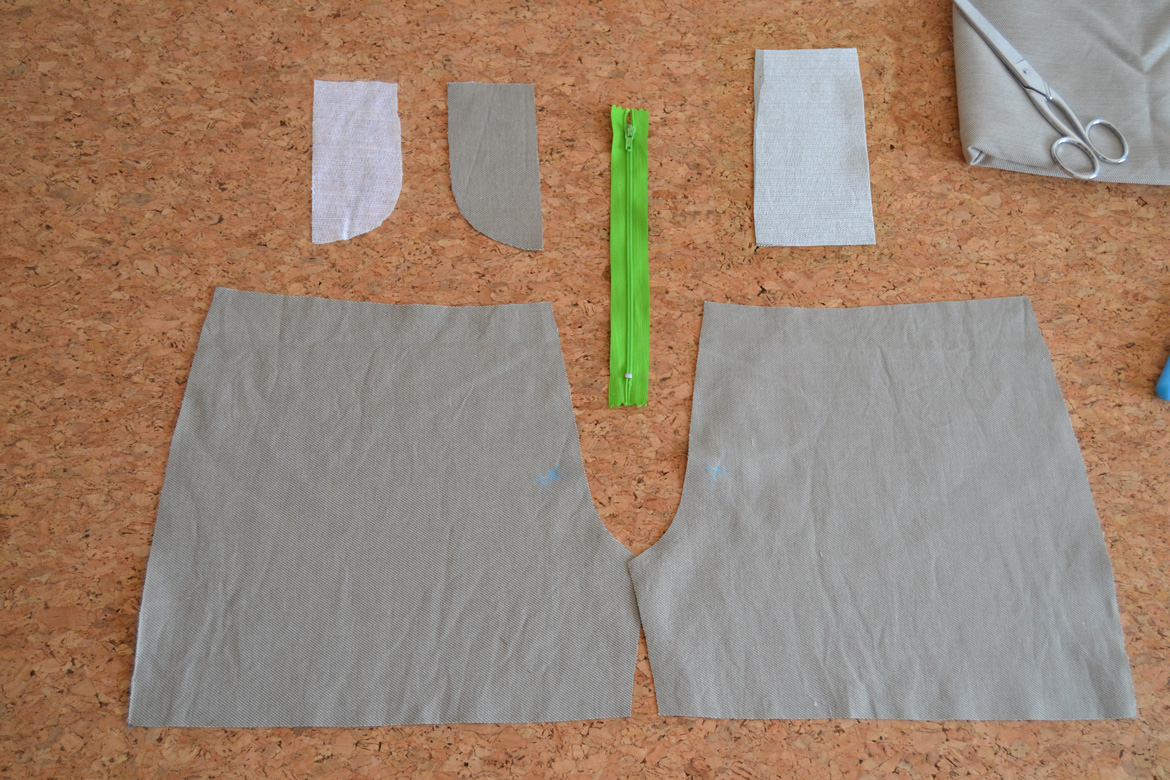 1. These are the pieces you’ll need to install the zipper:
1. These are the pieces you’ll need to install the zipper: 2. Finish the center front seam of the front pieces with serger or zigzag stitch. Repport your marks on the front pieces.
2. Finish the center front seam of the front pieces with serger or zigzag stitch. Repport your marks on the front pieces.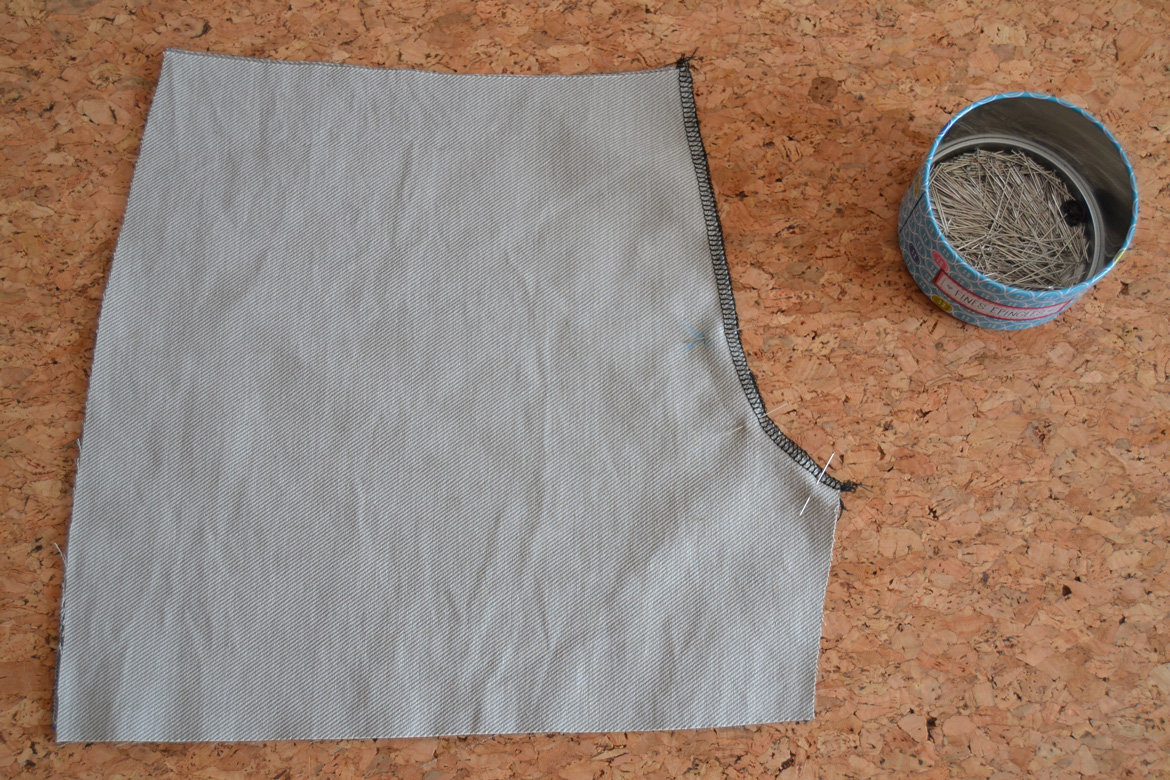
 3. With right sides together, pin the front pieces together at the center front seam.
3. With right sides together, pin the front pieces together at the center front seam.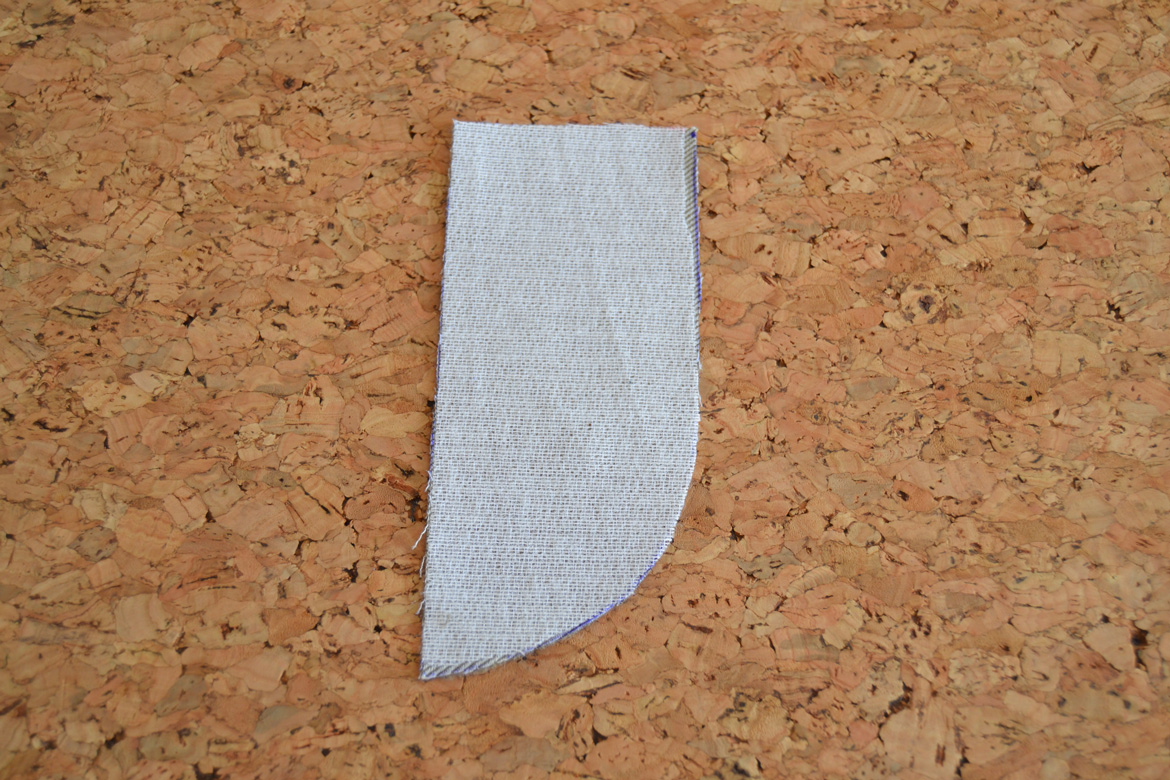
 5. Interface the fly facing piece.
5. Interface the fly facing piece.
 7. Pin the fly facing to the left side front piece (when you wear the trousers) with right sides together.
7. Pin the fly facing to the left side front piece (when you wear the trousers) with right sides together.
 9. Open the fly facing. Trim and press the seam allowances toward the front.
9. Open the fly facing. Trim and press the seam allowances toward the front.

 11. Interface the fly shield piece.
11. Interface the fly shield piece.


 14. Press the right side front piece (when you wear the trousers) 0,5 cm (1/4″) toward the inside.
14. Press the right side front piece (when you wear the trousers) 0,5 cm (1/4″) toward the inside. 18. Pin the fly shield out of the way so that it won’t get caught when we sew the fly topstitch.
18. Pin the fly shield out of the way so that it won’t get caught when we sew the fly topstitch.
 19. Close the zipper (but don’t cut it yet). Place the trousers front correctly and draw the topstitching line (you can use the front pattern piece or the fly facing as guide).
19. Close the zipper (but don’t cut it yet). Place the trousers front correctly and draw the topstitching line (you can use the front pattern piece or the fly facing as guide).
 21. Unpin the fly shield and place it over the zipper. Pin in place again.
21. Unpin the fly shield and place it over the zipper. Pin in place again. 23. There you go, an easy way to insert a fly front zipper!
23. There you go, an easy way to insert a fly front zipper!